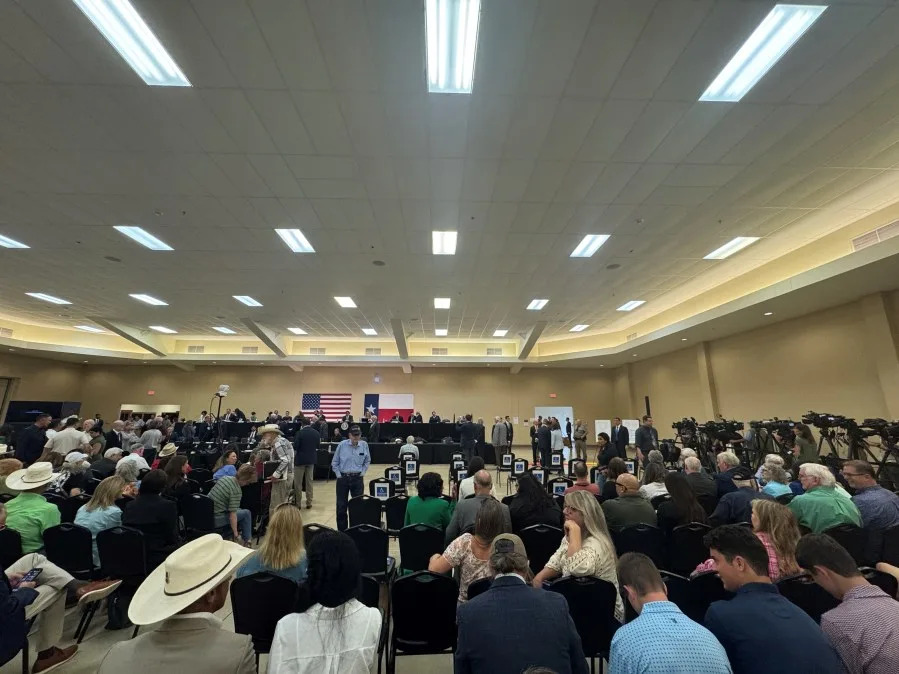
AUSTIN (Nexstar) — Kerr County leaders are facing mounting scrutiny over their handling of the Fourth of July flooding. On Thursday, the questions came from state lawmakers who traveled to the flood zone for a special session hearing.
Inside the packed Hill County Youth Event Center, which has been taken over by emergency responders, pointed comments were directed at local leaders.
‘You were nowhere to be found’
“Everyone was here that day working their a** off and you were nowhere to be found,” Lt. Gov. Dan Patrick, R-Texas, told Kerr County Judge Rob Kelly. “I don’t know where you were on day one, on July 4th, but you should have been here directing your response. That’s your responsibility.”
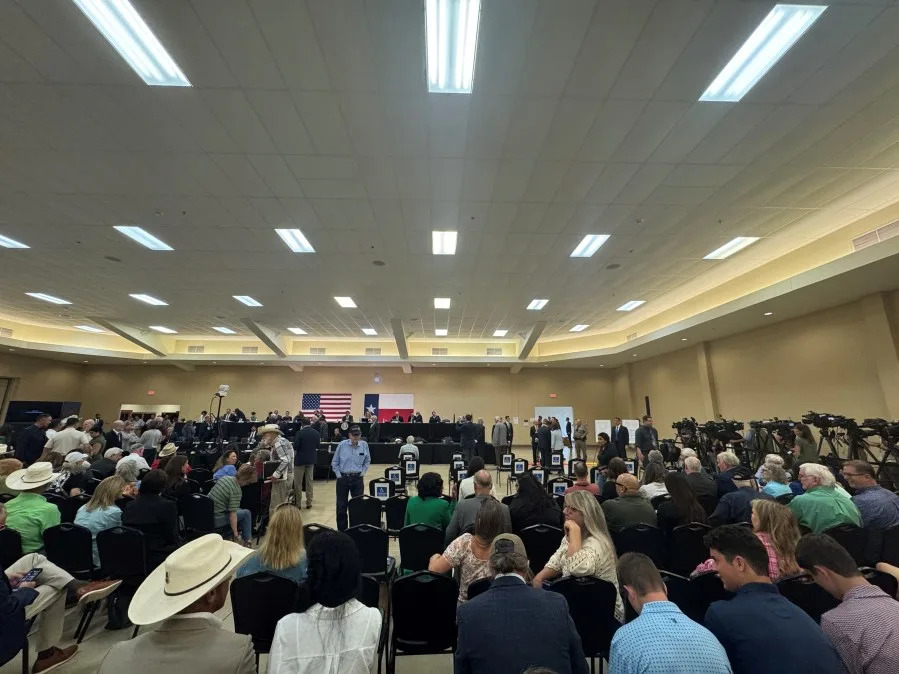
Kelly said he was out of town at a house at Lake Travis. He sat at a table across from lawmakers next to other local officials. Kerr County Emergency Management Coordinator W.B. Thomas said he was ill and asleep. Sheriff Larry Leitha said he didn’t wake up until after people were already trapped on roofs.
Asked why an evacuation wasn’t issued, Kelly replied: “It was too late. It was too late,” saying the wall of water was too massive and arrived too quickly.
During more than three hours of testimony, it was revealed there are no records of communications with Camp Mystic, where at least 27 campers and counselors died. A CodeRED mobile alert requested at 4:22 a.m. wasn’t issued until 5:01 a.m. — almost 40 minutes later — with dispatchers “overwhelmed,” Leitha said, noting other life-saving measures were taking place.
“The three guys of Kerr County who were responsible for sounding the alarm were effectively not available,” remarked Rep. Ann Johnson, D-Houston.
“We have a lot of folks who have titles but when the time came to act they did not do so in a timely fashion,” said Rep. Drew Darby, R-San Angelo.
Live Blog: Lawmakers hear testimony in Kerrville on deadly July 4 floods
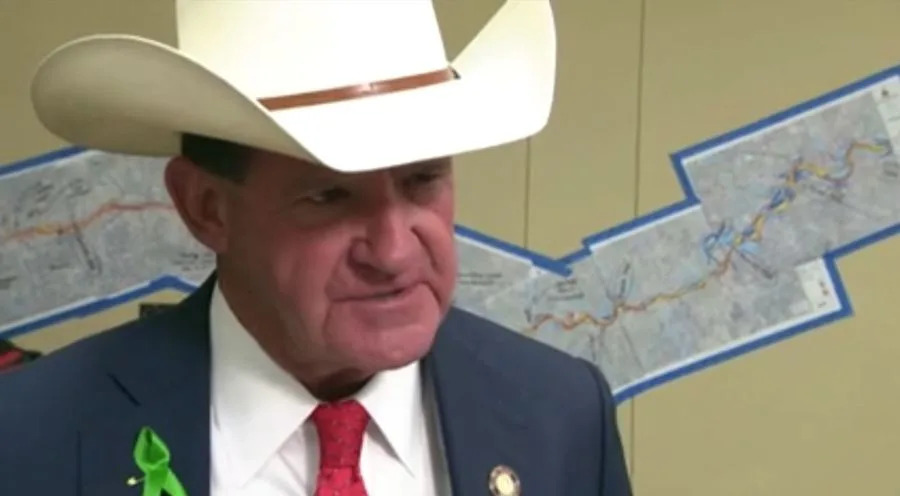
For state lawmakers, the hearing was about seeking solutions — including warning sirens and upgrading communications equipment, from radios to cell towers.
Kerrville Mayor Joe Herring told lawmakers he would like to see a flood warning system — sirens or a data-driven alerting system — installed in Kerr County by next summer.
Some proposed ideas related to sirens and ensuring radios work between different agencies were introduced in House Bill 13, co-authored by committee member Rep. Joe Moody during the recent legislative session. It failed to pass.
Another solution mentioned mirrored one from a recent KXAN investigation. Sonoma County, California Emergency Management Dep. Director, Sam Willis, said after deadly fires in 2017, they began holding weekly drills to practice using their emergency alert system.
“Lessons that we painfully had to go through, which is we have to understand what the capabilities and limitations of systems are,” Wallis told KXAN. “We have to come up with policies and procedures before the disaster, so we know exactly what to do, and we need to practice, practice, practice.”
Rep. Terry Wilson, R-Georgetown, asked how the emergency leaders how often their plans are rehearsed and suggested: “Plans are great unless they’re rehearsed … rehearsals are key.”
As Kerr County leaders avoid alert questions, new audio surfaces in CodeRED timeline
‘I wish I had superhuman power to see the future’
“There were so many lives lost here,” Rep. AJ Louderback, R-Victoria, told KXAN before the meeting started. “So, I’m interested in looking at the entire process.”
Louderback said he hoped to be able to “clearly understand the process here, what happened” in order to “more efficiently, more effectively … save our citizens” during future disasters.
The Upper Guadalupe River Authority’s director, Dr. William Rector, who is appointed by the governor, told lawmakers flood sirens were never installed — and its eight property-tax funded river gauges aren’t locally monitored — with data instead collected by the National Weather Service.
“I would say that you should be in the business of protecting people from the things that are going on in the river,” said Sen. Donna Campbell, R-New Braunfels. “I don’t see how the Upper Guadalupe River Authority helped in any way in this flood.”
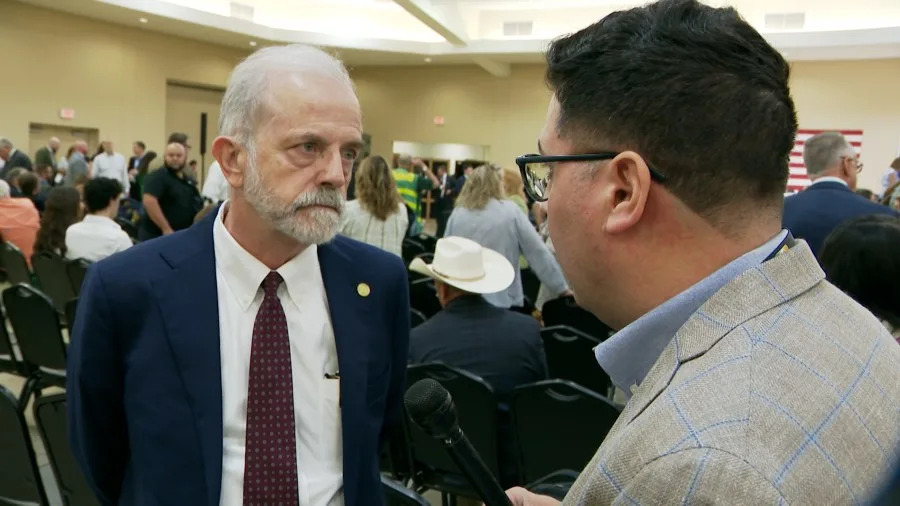
Lawmakers questioned what had been done since the UGRA was created in 1939 and floated the idea of merging it with the Guadalupe Blanco River Authority.
KXAN also had our own questions for Herring after records we obtained showed he never saw emails from the Texas Division of Emergency Management asking him to join a “Situational Awareness Call for Severe Weather Affecting the State of Texas” the day before the flood.
“I think I read your reporting and it said, if I’m remembering correctly, that you reviewed those slides from that presentation,” the mayor told KXAN, referencing TDEM briefing materials, which warned of a “slight” risk for flash-flooding. “So, what I think, honestly, is that the event that occurred here was beyond the limits of current meteorology science.”
“Do I wish I had seen that email? I do,” Herring added. “But, even if I’d seen it, I don’t know that it would have prepared me for the event that followed.
KXAN asked, looking back, what, if anything, he wishes he could have done differently.
“Well,” Herring replied, “I wish I had superhuman power to see the future.”
Before the meeting, KXAN sent our recent investigations to every member on the House and Senate Select Committee on Disaster Preparedness and Flooding. Lawmakers told residents it will take not just this special session but future legislative sessions to address the fallout from the flood and make necessary changes.
The flooding killed 108 people, including 37 children in Kerr County. Two people are still missing, as of Thursday.
Texas Senate passes full THC ban again
The Texas Senate has passed Senate Bill 5, a full ban on THC, in a 21-8 vote. The bill is very similar to SB 3 from the regular session, which Gov. Greg Abbott ultimately vetoed, saying it would not hold up in court. That version of the bill also passed 21-8.
Gov. Abbott vetoes THC ban, calls upcoming special legislative session
That a full ban on THC passed in the chamber that Lt. Gov. Dan Patrick presides over isn’t surprise. The Lieutenant Governor has been a major proponent of banning THC, and has argued that legal hemp-derived products are marketed to children with harmful consequences.
Sen. Charles Perry, R-Lubbock, delivered remarks on the Senate floor in response to Abbott’s legal critique in the veto proclamation.
“After the Arkansas case was recently overturned in the Eighth Circuit, no Federal Court has held that the state regulations of consumer health products are preempted from federal law,” Perry said.
Perry and Sen. Molly Cook, D-Houston, engaged in a floor debate over the decision between regulation, as Abbott suggested in his veto proclamation, and a total ban. Cook pointed to the fact that the government regulates other things, including intoxicating products like alcohol. Perry appeared to suggest that alcohol should be banned too.
“[The alcohol] ship has sailed,” Perry said. “The difference is, I’m told the THC component goes from 18 hours to four days in the body, that you could literally be tripping for four days on some of this stuff.”
Cook pointed to the fact that THC can have therapeutic benefits, while alcohol does not, but still has consequences.
“I think alcohol has very, very few therapeutic benefits. I think cannabis has a lot of therapeutic benefits. Alcohol is an unbelievably high-risk substance — DUIs, overdoses, liver disease,” Cook said.
The arguments between regulation and ban are the same arguments the legislature has heard for months, both in floor debate and in public testimony. Now, the bill must clear the Senate one last time before heading to the House for consideration.
It is unclear if Abbott would sign a nearly identical bill to the one he vetoed last month.
Texas House committee advances congressional redistricting plan
In a Saturday morning meeting, the Texas House Select Committee on Congressional Redistricting approved legislation to change redraw voting districts for the Congressional seats in the state. The committee vote sets the stage for the bill to be considered by Texas House members next week.
House Bill 4 calls for redrawing 37 of the state’s 38 congressional districts, with changes primarily focused on five districts drawn for partisan Republican advantage. President Donald Trump previously called for Texas leaders to redraw maps to gain Republican seats in the 2026 elections.
“Just a very simple redrawing, we pick up five seats,” the president told reporters last month.
The committee vote came shortly before 9:30 a.m. Saturday, hours after a lengthy public hearing over the legislation that started Friday morning. The hearing stretched past midnight, ending just before 1:30 a.m. Saturday.
State Rep. Todd Hunter, R-Corpus Christi, presented House Bill 4 at the start of Friday’s hearing. Hunter acknowledged the map was drawn using “political performance” as a criteria, citing U.S. Supreme Court precedent allowing partisan considerations in redistricting.
“These districts were drawn primarily using political performance,” Hunter said. “That criteria from the U.S. Supreme Court.”
Hunter, who is listed as the author of HB 4, faced several questions about whether he instructed map makers to carve out five new Republican seats, as Trump requested. Hunter said he did not give any direction as to the outcome of redrawing the map. Hunter also claimed repeatedly that he did not know who drew the maps used in the legislation.
“We have to do a congressional redistricting. A law firm was hired. They no doubt were doing work. The chairman of the committee asked me to file the bill. I agreed. I met with counsel. They showed me the data and what they were, think that they could be able to show on the data. I said, let’s get it in bill form,” Hunter said early Saturday morning, responding to a question from Rep. Chris Turner, a Democrat from Dallas.
The proposed changes target Districts 9, 28, 32, 34 and 35, creating what Hunter described as Republican-leaning seats while establishing new majority-minority districts. Under the plan, four of the five redrawn districts would have Hispanic citizen voting-age population majorities.
Below is an interactive map that lets you see the differences in the current congressional map and the proposed map. You can slide the white line to compare both maps:
The proposed map appears to target congressional members in Austin, Dallas, south Texas and Houston. Brian Smith, a political professor at St. Edwards University, explains the map makers are “taking democratic districts that are already safe and making them even safer, which then may makes the neighboring Republican districts more Republican.”
For example, parts of district 35, held by Democratic U.S. Rep. Greg Casar, has been merged with district 37. That seat is currently held by Democratic U.S. Rep. Lloyd Doggett.
“Merging the 35th and the 37th districts is illegal voter suppression of Black and Latino Central Texans,” Casar said on social media Wednesday morning. “By merging our Central Texas districts, Trump wants to commit yet another crime— this time, against Texas voters and against The Voting Rights Act.”
Here is a close up view of major cities in Texas and how different they look from the current map to the proposed map:
Doggett plans to run again for his seat in District 37, which under the proposed map has become an even safer seat for Democrats, but at the expense of taking away another Democratic congressman.
“I think Trump has taken a hatchet to Austin and to really the entire state, in order to preserve his one man rule,” Doggett said of the proposed map.
According to 2024 results, President Trump would have won 30 districts under the proposed map. President Trump told reporters earlier this month the goal of redistricting is to pick up five new seats for Republicans in Texas.
“Each of these newly drawn districts now trend Republican in political performance,” Hunter said. “Doesn’t guarantee electoral success. Does not guarantee — that’s up to the candidates.”
Partisan advantage acknowledged
During Friday’s hearing, Hunter and State Rep. David Spiller, R – Jacksboro, openly discussed the partisan intent behind the redistricting effort. Spiller noted that Texas currently holds a 65% Republican advantage in its congressional delegation despite being 58% Republican statewide, compared to larger advantages in Democratic-controlled states.
“There is nothing wrong with doing it,” Hunter said regarding partisan redistricting. “I’m telling you that we have five new districts, and these five new districts are based on political performance.”
The proposed changes would affect major metropolitan areas including Houston, Dallas, San Antonio and the Rio Grande Valley.
State Rep. Christian Manuel, D-Port Arthur, questioned whether the changes represented “political retaliation” against Black congressional members who have opposed the current administration.
“Is this political retribution against congressional members, particularly those who have been outspoken and who, whether it’s intentional or not, happen to be Black African American?” Manuel asked.
Hunter responded: “The answer I can only speak for Todd Hunter, is no.”
The committee vote Saturday morning to advance the bill was 12-6 along party lines. Committee Chair Cody Vasut, R – Angleton, said he expects the proposed map will be discussed on the House floor as early as Tuesday next week.
House Democrats do not have the votes to block the redistricting plans, with few, if any Republicans expected to vote against the measure. Some Democrats have spoken openly about what some call the “nuclear option,” breaking quorum to stall the legislation. That would likely involve leaving the state so the House does not have enough members in attendance to pass legislation.
Republicans have previously passed rules that toughen penalties for House members who break quorum. Those include fines of $500 per day and even potential expulsion from the House. Despite the stiff penalties, Democrats are not ruling out a quorum break.
“I won’t reveal what strategy we’re taking, obviously that would be counterproductive,” State Rep. Gina Hinojosa, D – Austin, said. “I will say that, for instance, a quorum break that is a procedural tool that legislators have within our pocket to use to represent our constituents. Those rules, I believe are unconstitutional under the Texas Constitution, because they punish members for using what is a legislative tool.”
U.S. House Democratic leader Hakeem Jeffries came to Austin earlier this week to meet with Texas Democrats. Reporters asked if he would push state legislators to break quorum to block attempts to redraw the state’s congressional map.
“All options should be on the table to protect the people of Texas, but Texas Democrats are going to be the ones to decide that,” Jeffries said during a news conference.
“We will fight them politically. We will fight them governmentally. We will fight them in court. We will fight them in terms of winning the hearts and minds of the people of Texas and beyond,” Jeffries added.
U.S. Senator John Cornyn, R – Texas, was critical of Jeffries getting involved with state lawmakers.
“I’m sure there are not many Texans willing to be preached at by a New York liberal about how to draw congressional districts in Texas,” Cornyn said.
He expects the redistricting legislation to pass, even if Democrats attempt to break quorum.
“I think it’ll all work out over the coming weeks, and then it’ll be up to the for the courts to pass on, on the districts that are actually drawn,” Cornyn added.
Seeking answers and accountability after flood response
Records obtained by KXAN investigators show the mayor of Kerrville received an invite two days before the deadly July 4 flood in and around his community to attend a call with state officials briefing area leaders on the weather dangers ahead. The discovery comes amid continued criticism local decision-makers failed to prepare for the disaster, alert residents and evacuate people sooner.
In an email sent by the Texas Division of Emergency Management’s State Operations Center on July 2, Mayor Joe Herring was invited to attend a “Situational Awareness Call for Severe Weather” at 10 a.m. the following day. Associated slides – which indicated a flash flooding risk for the region – were also sent by TDEM a half hour before that call to both the mayor and Jerremy Hughes, then employed by the city as its emergency management coordinator.
MAP: Where have flash flooding deaths been confirmed in Texas?
“I was not aware of the invitation or the phone call,” Herring told KXAN investigators Monday. “I had not seen the emailed invitation. I thought the statements made by others indicated I had received a telephone call, which I had not. I misunderstood.”
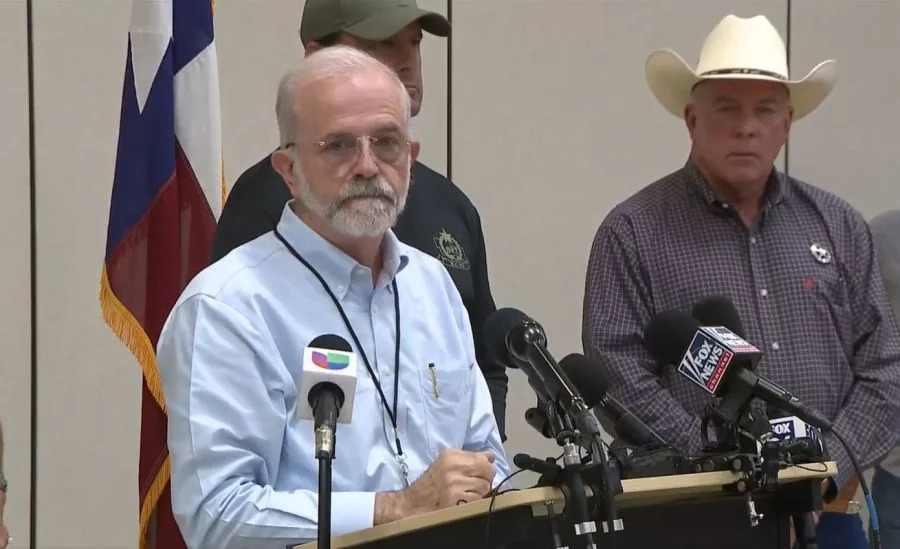
KXAN investigators requested record of any communication made between certain city officials and the state in the days surrounding the flood. The inquiry followed Lt. Gov. Dan Patrick saying in a July 4 press event – just hours after the Guadalupe River rose around 30 feet – that TDEM’s Region 6 director, Jay Hall, “personally contacted the judges and the mayors in that area and notified them all of potential flooding.”
“Yesterday morning, the message was sent,” Patrick said. “It is up to the local counties and mayors under the law to evacuate if they feel a need, but that information was passed along.”
As Kerr County leaders avoid alert questions, new audio surfaces in CodeRED timeline
KXAN investigators also requested record of similar communication from TDEM and a list of city and county participants on that call. The agency has not commented specifically on the matter but told KXAN following the flood its coordination “includes daily statewide situational awareness calls leading up to and during disasters.”
READ: Weather briefing materials sent to local officials by TDEM Download
According to the email TDEM sent to Herring, the purpose of the call was for “situational awareness only and not for resources requests.”
“This information will focus on life safety or immediate jurisdictional support priorities only,” the email read. “This briefing is designed to provide real-time, high-level information in a very short time period.”
Herring earlier told reporters he personally “wasn’t invited to the call” but now acknowledges to KXAN investigators “an invitation had indeed been emailed” to him but he did not see it.
“I wish I had seen the invitation/email, because I would have participated in the telephone call,” he said in a statement to KXAN investigators.
The email invite was among more than 70 documents provided by the city in response to KXAN’s record request. They included communication from TDEM to Herring, Hughes and other city officials between July 2 and 7.
Sheriff hints at after action review as records reveal warning of worst case flood event
KXAN investigators also reached out to Hughes Monday for a comment about the records. An automatic reply received back stated “Jerremy Hughes no longer works for the City of Kerrville” and left another public information contact, which said in a statement Hughes was helping set up a “Mobile Command Post” in a city park for July 4 festivities at the time of the TDEM call and that he had “submitted his retirement on July 2nd after 31 years of dedicated service.” Hughes served in the role through July 24, and the city could not verify if he saw or received TDEM’s email to him.
TDEM confirmed to KXAN investigators Kerr County leaders were also invited to the call. Those include County Judge Rob Kelly and Emergency Management Coordinator W.B. Thomas, who have not responded to KXAN’s request for comment.
Copyright 2025 Nexstar Media, Inc. All rights reserved. This material may not be published, broadcast, rewritten, or redistributed.
For the latest news, weather, sports, and streaming video, head to KXAN Austin.







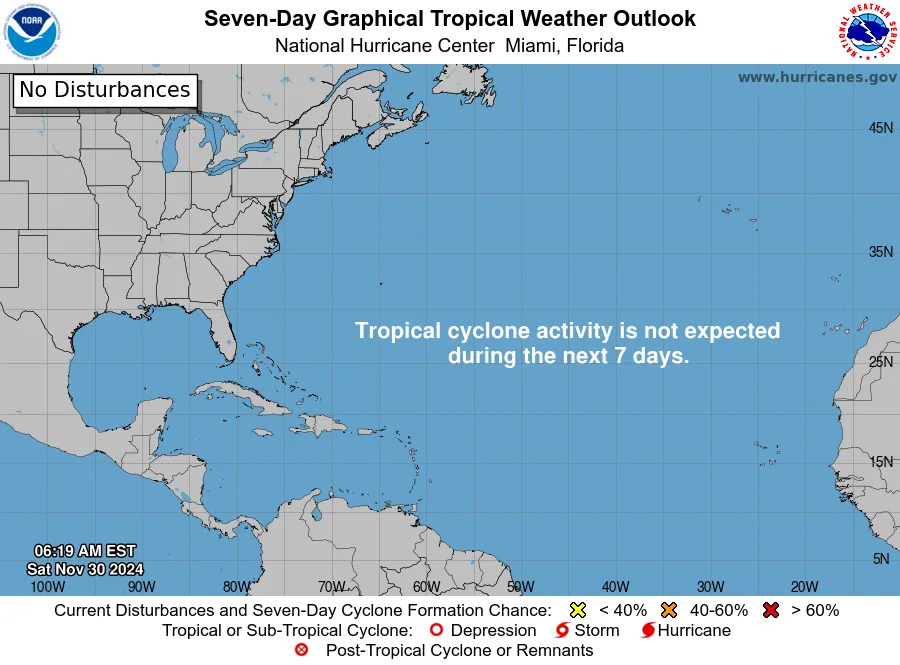
Comments